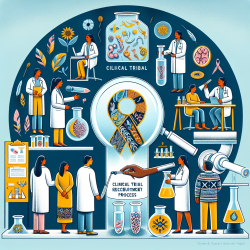Introduction
The Proceedings of the Second Curing Coma Campaign NIH Symposium presents a comprehensive overview of the latest research in coma and disorders of consciousness (DoC). This symposium, held from May 3 to May 5, 2021, aimed to advance the understanding and treatment of coma through collaborative efforts across six major domains: Biology of Coma, Coma Database, Neuroprognostication, Care of Comatose Patients, Early Clinical Trials, and Long-term Recovery.
Key Outcomes and Recommendations
The symposium identified several actionable research targets and recommendations for practitioners:
- Biology of Coma: Develop a comprehensive framework for differentiating clinical subtypes of DoC based on consciousness, environmental connectedness, and responsiveness. This will facilitate targeted therapies specific to each phase of DoC.
- Coma Database: Establish a centralized database using common data elements (CDEs) to streamline data collection and analysis, enabling better insights into recovery trajectories and supporting future interventional trials.
- Neuroprognostication: Enhance prognostic accuracy by developing consensus on prognostic markers and timing, and by integrating patient and surrogate preferences into decision-making processes.
- Care of Comatose Patients: Standardize care practices across settings to reduce variability and improve outcomes. This includes integrating patient and family experiences into assessment tools and care transitions.
- Early Clinical Trials: Focus on developing adaptive, exploratory interventional trials to identify therapies that support consciousness recovery. This requires innovative trial designs and the establishment of surrogate outcome measures.
- Long-term Recovery: Conduct longitudinal studies to assess recovery trajectories and develop models of care that integrate family engagement and decision-making throughout the lifespan.
Encouraging Further Research
Practitioners are encouraged to engage in further research by leveraging the insights and recommendations from the symposium. By participating in collaborative efforts and utilizing the centralized database, practitioners can contribute to the advancement of coma science and improve patient outcomes.
Conclusion
The Curing Coma Campaign represents a significant step forward in the understanding and treatment of coma and DoC. By implementing the outcomes of the research presented at the symposium, practitioners can enhance their skills and contribute to the collective mission of improving the lives of patients with DoC.
To read the original research paper, please follow this link: Proceedings of the Second Curing Coma Campaign NIH Symposium: Challenging the Future of Research for Coma and Disorders of Consciousness.










